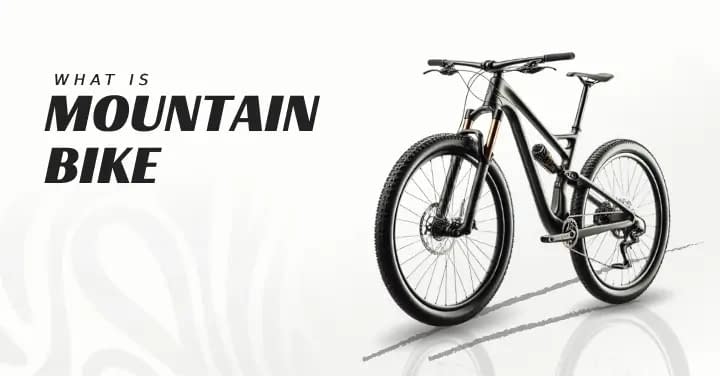Mountain biking: More than just a bike, it’s an adventure. But exactly what is mountain bike? Is it just a regular bicycle with thicker tires and sturdier frame, or does it embody a whole culture and lifestyle of its own? In this blog, we’ll break down the key features of a mountain bike, explain why those features matter for off-road riding, and help you get started on your mountain biking journey.
What is a Mountain Bike?
A mountain bike is a type of bicycle specifically designed for off-road cycling. It is typically characterized by sturdy construction, knobby tires, and suspension systems to handle rough terrain. Mountain bikes are commonly used for trail riding, downhill racing, and cross-country cycling. They provide a versatile and durable option for outdoor enthusiasts looking to explore rugged landscapes. While Mountain Bikes are made for off-road riding, but you can also use them for commuting.
Features and Components of a Mountain Bike
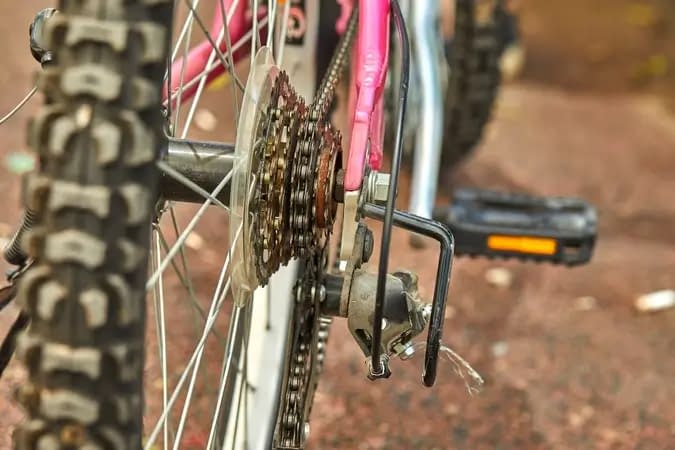
A mountain bike is your trusty steed built for off-road riding on rough terrain that would make a regular bike whimper. Their tough frames, super grippy tires, and often some clever suspension mean these bikes thrive where roads end and the adventure truly begins.
Modern mountain bikes come in a variety of designs, but all share some basic components:
- Frame: This is your bike’s strong skeleton, typically made from aluminum, carbon fiber, steel, or titanium. Each Frame material makes the bike feel a bit different on the ride.
- Suspension: Most mountain bikes have suspension forks on the front, and some have a shock absorber at the rear, which is known as full suspension. This keeps things smooth and helps your tires stick to the ground like glue.
- Wheels and Tires: Mountain bike wheels come in a few sizes for grown-ups. Mountain bike wheels are typically 26, 27.5, or 29 inches in diameter for adult bikes. The tires are the real stars – they’re wide with knobby patterns for gripping anything from loose dirt to slick rocks.
- Drivetrain: This includes the pedals, crankset, chain, cassette… all the stuff that makes your legs do the hard work. More gears mean easier climbing and finding the perfect “sweet spot” when pedaling.
- Brakes: Mountain bikes usually use disc brakes. These stop you super fast, even on wet, muddy trails where normal brakes might struggle.
- Handlebars and Stem: This is your control center! And the stem is the part connecting the handlebars to the bike’s frame. The right handlebars make a big difference in how comfortable you feel and how the bike handles.
- Saddle: Where you sit matters! The saddle is where the rider spends most of their time. There are various mountain bike saddle designs to suit different body types and riding styles.
Benefits of Mountain Biking
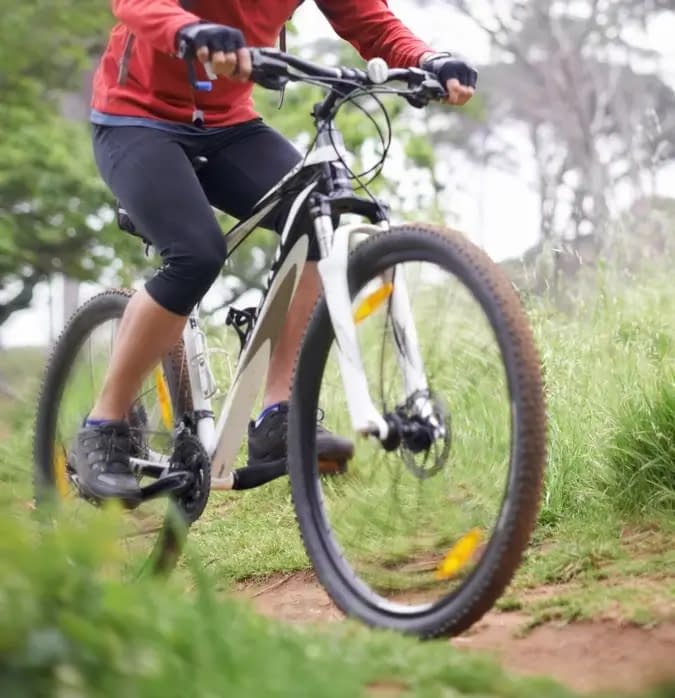
A Safer Way to Experience Adventure
Mountain biking is a relatively safe way to experience adventure sports. Unlike skiing or snowboarding, you don’t rely on factors such as weather conditions or lift access. You can step out the door and hit the trails.
Fitness and Health
From burning calories to strengthening your muscles, mountain biking is a full-body workout that offers both physical and mental benefits. It’s a sport that enhances cardiovascular health, improves coordination, and provides a dose of mood-boosting endorphins.
Stress Relief and Connection to Nature
There’s something undeniably therapeutic about cruising through the woods. Mountain biking offers an escape from the daily grind, a chance to immerse yourself in the beauty of nature.
Different Types of Mountain Bikes
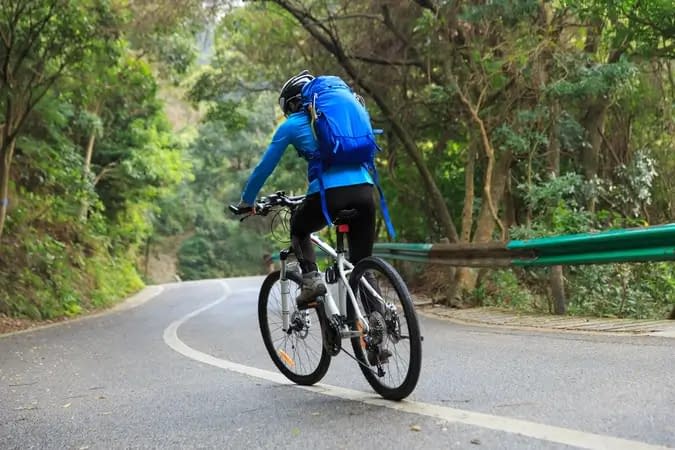
Trail Bikes: The Mountain Biking Sweet Spot
If you’re looking for a bike that can handle it all, a trail bike might be your perfect match. These are the all-rounders of the mountain biking world—they’ve got enough suspension to smooth out the bumps, but they’re still light enough to climb hills without feeling like a chore. They’re perfect for exploring all kinds of trails, whether you’re a beginner or a seasoned rider.
Cross-Country (XC) Bikes
Think of these as the road bikes of the dirt world. They’re built for speed and long distances, especially on smoother trails. If racing or racking up miles is your thing, Cross-Country (XC) could be the way to go.
Downhill and Freeride Bikes
Adrenaline junkie? These bikes are all about tackling gnarly descents and massive jumps. Big suspension and sturdy builds make them perfect for the most extreme terrain.
All-Mountain/Enduro Bikes
Imagine a trail bike that’s extra focused on downhill fun. That’s an all-mountain/enduro bike. They’ll still get you up the hill but exist to let you fly back down.
Fat Bikes
If normal trails aren’t your thing, fat bikes open up a whole new world. Their massive tires let you ride on stuff most people wouldn’t dream of – think snow, sand, anywhere you need extra float!
There are various types of mountain bikes suited for different styles of riding. Discover the differences in our post on different types of mountain bikes.
Safety Tips for Mountain Biking
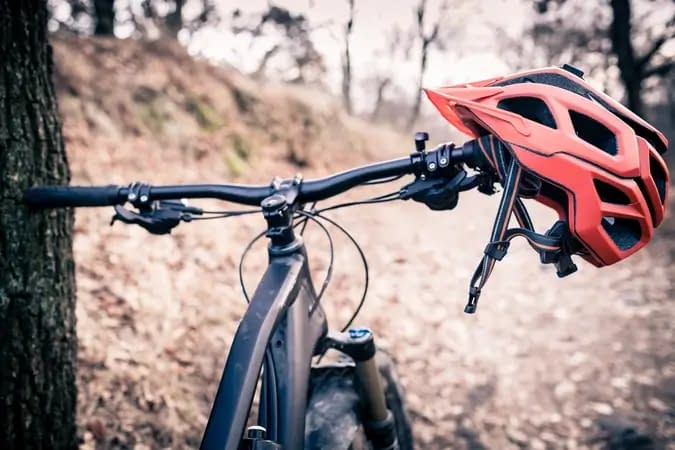
Always Wear a Helmet
Your helmet is your first line of defense in case of a fall. It’s NOT optional! Pick one made for mountain biking – they’ve got extra protection and airflow for the type of riding you’ll do.
Ride Within Your Limits
We all want to crush new trails and go faster, but pushing it too far is how you end up walking your bike home (or worse!). Riding within your limits, especially on tough trails, is key. Keep practicing, and you’ll be amazed at how quickly your skills improve.
Carry Essential Gear
A little planning goes a long way! At the bare minimum, bring a patch kit, extra water and a multi-tool. If you’re going on longer rides, consider a first-aid kit and a lightweight emergency blanket.
Check Trail Conditions
Nobody wants their ride ruined by a crazy rainstorm or muddy trails that turn into a slip ‘n slide. Always check the weather and trail conditions before you head out. Wet trails are way harder to ride and get damaged more easily.
Maintenance and Care for Your Mountain Bike
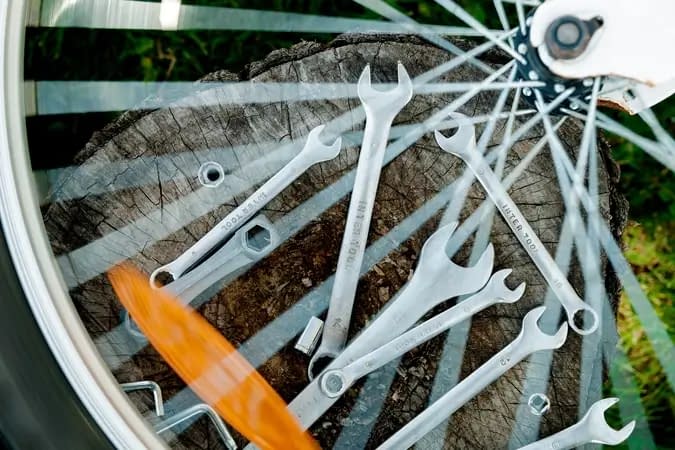
Basic Maintenance Checks
Ensure a smooth ride with a simple pre-ride bike check. Check your tire pressure (no one likes a flat!), make sure your chain isn’t bone-dry, test those brakes, and give your suspension a little bounce. It’ll keep you safe and catch problems before they turn into a huge pain.
Washing Your Bike
Your bike isn’t afraid of a little water! Clean bikes ride smoother (and are easier to maintain). Clean your bike using a mild detergent and a soft brush, paying particular attention to the drivetrain and braking surfaces.
Suspensions and Bearings
Your suspension and those little bearings need love too! Check the owner’s manual to see how often they should be serviced. A bit of attention now means a smoother ride and parts that last longer.
Storing Your Bike
Keep your bike in a dry spot when you’re not riding. If it’s going to be parked for a long stretch, consider giving it a little tune-up before you head back out.
Professional Servicing
For specialized tasks or if you’re not confident in your skills, consider taking your bike to a professional bike mechanic for periodic servicing. This can help catch issues early and keep your bike in top condition for longer.
Choosing the Right Mountain Bike for Your Needs
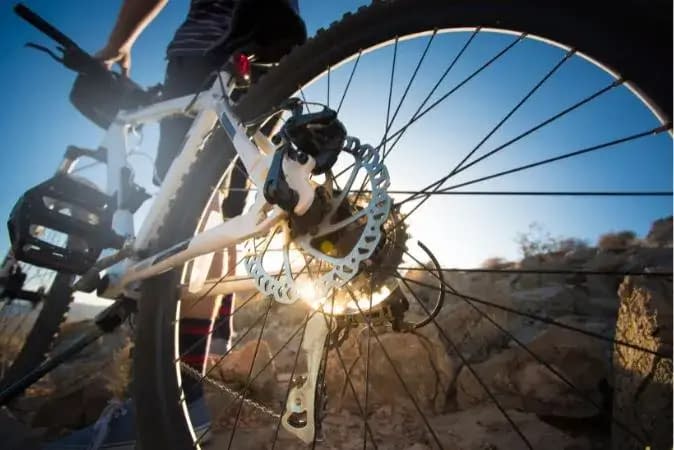
Understanding Your Riding Style
Think of choosing a mountain bike like dating – you have to know what you’re into before you commit! Do you crave wild, bumpy rides that get your heart pounding, or are long, scenic adventures more your speed?
Considering Suspension Needs
If you’re all about tackling crazy-rough trails, a full-suspension bike is like having pillows strapped to your ride. It’ll make those bumpy bits way more fun (and less painful!). But, if smoother trails and long distances are your jam, a hardtail bike (with just front suspension) might be easier on your wallet and your legs.
Getting the Right Fit
Imagine wearing shoes that are too big or too small – not fun, right? It’s the same with a bike! Using sizing charts is a good start, but for a truly perfect fit, getting a pro to measure you up is worth its weight in gold. They’ll make sure you’re comfy and riding at your best!
Setting a Budget
Mountain bikes come in all sorts of prices. Super high-tech bikes can cost a small fortune, but don’t worry! Set a budget and focus on the important stuff – a good solid frame and brakes you can trust.
If you’re curious about what a mountain bike can do, let’s explore what they’re good for. These bikes are built to handle rugged trails, rocky descents, and off-road adventures. So, if you’re looking for a bike that can take you on thrilling rides, a mountain bike is a great option.
Conclusion
With this in-depth guide, you’re ready to head out and explore the exhilarating world of mountain biking. From choosing the right bike to becoming a smarter and safer rider, your mountain biking experience is about to reach new heights. Remember that practice makes perfect, and every ride is an opportunity to learn and grow as a rider.
FAQ
What is a mountain bike?
A mountain bike is a type of bicycle specifically designed for off-road cycling on rough terrain, basically anywhere a normal bike would struggle.
What are the differences between a mountain bike and a regular bike?
The key differences are in the design and features. Mountain bikes have wider, knobby tires for better traction, suspension systems to absorb shock, and a more durable frame to withstand rough terrain.
What kind of terrain is suitable for mountain biking?
The better question is where can’t you? Trails in the woods, up hillsides… it’s great for exploring places your normal bike wouldn’t like. It is designed to handle rough and uneven surfaces.
Are mountain bikes only for experienced riders?
Riders of all experience levels can use mountain bikes. There are different types of mountain bikes available, including beginner-friendly models with features to help new riders navigate off-road terrain.
Are there different types of mountain bikes available?
Yes! Some are for smoother trails, others are monsters meant for downhill speed. You can find a bike for exactly the kind of riding you want to do.
Do I need special gear when riding a mountain bike?
Definitely a helmet! Those are a must. If you’re going on tougher trails, things like gloves and knee pads are a good call too.
Can I customize my mountain bike with different components or accessories?
Totally! Upgrading parts or adding stuff like lights or a bag is how a lot of people get their bike just the way they like it.
